This article is written by Leverage Lab CEO AnnMarie Wills
You are hopping in the car for a long road trip to a new exciting destination. Snacks are on deck, tunes are locked and loaded, buckled in with excitement flowing through your veins. The path before is already mapped out on your phone with multiple routes based on whether you want to see the world’s largest ball of twine, or want a more eco-friendly route. By relying on a standardized tool like GPS you can rest assured that all the necessary data and inputs will give you a consistent output and confidence you will get where you need to go.
But what if you were to imagine the same journey without GPS, maps, or standardized tools to aid in your navigation? You’d be left to rely solely on your own limited knowledge of geography, highway systems, and directions. Your decisions would be based on personal experience rather than verifiable data and inputs. How long would it take before your initial confidence begins to dwindle, or before doubts set in about reaching your destination at all?
Any organization embarking on a path to customer journey personalization is sitting at a critical crossroads. One path is a use-case driven approach, while the other is to utilize a standardized methodology for personalization at scale. On the surface both paths might seem similar but where you’ll end up (and when you might arrive) can be two dramatically different things.
By implementing a standardized methodology for personalization at scale, your organization can establish a consistent and structured approach. Following this technique means defining a set of common processes, tools, and guidelines that govern how your efforts are planned, implemented and evaluated. Once established, this can be shared and understood by all team members, making it easier to manage and advance personalization efforts while avoiding unnecessary distractions. Additionally, a standardized methodology and framework ensures that personalization is applied uniformly across all relevant touch points and channels, resulting in a cohesive and seamless customer experience.
For example, a standardized methodology might involve using a centralized platform for managing and executing personalization campaigns, with clearly defined workflows and decision-making criteria for selecting and targeting content and offers to specific customer segments. This can help streamline the personalization process and reduce the risk of errors or inconsistencies.
A standardized methodology could involve using a centralized platform to manage and execute personalization campaigns. The platform would have clear workflows and criteria for selecting and targeting content to specific customer groups. This simplifies the personalization process and reduces errors or inconsistencies. Additionally, this process usually has metrics and reporting frameworks to measure the impact and effectiveness of personalization efforts. This gives insights to improve personalization strategies and justify the investment in personalization initiatives.
When implementing personalization at scale, it is important to ensure that the personalized experiences offered to customers are consistent and cohesive across all relevant touch points and channels, such as websites, mobile apps, email, social media, and in-store interactions. This is where using a standardized methodology can be particularly valuable: it can specify factors such as the types of data to be used for personalization, the criteria for selecting personalized content and offers, and the frequency and timing of personalization.
Moreover, using a standardized methodology can help organizations to avoid the common problem of personalization silos, where different departments or teams within the organization are implementing their own personalization strategies independently of each other. By providing a common framework for personalization, a standardized methodology can help to break down these silos and ensure that personalization efforts are aligned and integrated across the organization.
A use case driven approach to personalization involves identifying specific scenarios where personalization can improve the customer experience, and then implementing personalized experiences for those scenarios. This can lead to an inconsistent and confusing experience, with different personalized experiences across touch points and channels. It may not consider the broader context of the customer journey or relationship with the brand. This approach can miss opportunities to personalize other areas that could benefit the customer.
A standardized methodology can help to address these issues by providing a more comprehensive and integrated approach to personalization at scale.
Consumers expect personalization and if they don’t get it their customer loyalty and their dollars will be spent elsewhere. A disjointed or inconsistent approach to delivering personalized experiences will invariably lead to dissatisfied customers, annoyed prospects and less money in your pocket.
So, take a moment to imagine hopping into that car with a fully charged GPS, a clear map to your destination, and no confusion or concern about how or when you will get there. Sounds blissful, doesn’t it? That is what Leverage Lab can provide.







